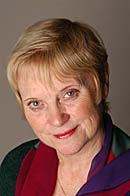Most presenters have to be solely responsible for writing their own scripts, directing their own performances and making sure that their subject is well laid out, its timing spot on and their voice is measured and loud enough to be clearly heard.
Not only that, they must also be strong minded enough to ditch any visuals or props they planned to use if they don't actually advance the story line and see to it that any dissonances are set up for deliberate effect and do not occur as the unintended consequence of poor construction.
A presentation so thoughtfully structured should easily capture audience attention and - no matter how circuitous a route it takes - keep people focussed until the whole has been brought to a successful conclusion.
"Aye," but "there's the rub," Ö. conclusions!
Far too many presenters who do a great job designing and interlacing the pattern of their argument, simply allow the whole thing to fray away at the edges or unravel completely by paying little or no attention to how they secure the final knot.
Again and again one attends presentations in which the message has been cast aside, the body has sagged, the head has lowered, the voice has faded and the presenter has sat down or is leaving the room before the most attentive of listeners has realised that the presentation was even nearing its conclusion, never mind had actually ended!
To be fair - no presenter however competent, can give information to an audience in such a way that it will hold the attention of all throughout its length. No matter how compelling the delivery, the mind of each and every listener will harbour competing and distracting thoughts at some time during a presenter's deliberations.
Yet conclusions are the times when any speakers can inspire not only those whose attention has wandered for a moment, but also those who have been longing to escape from the outset, to get the gist of their message. The magic words are IN CONCLUSION - the 'abracadabra' at the disposal of all presenters everywhere. On hearing that a presentation is drawing to a close, a little frisson will pass round any audience anywhere. All who have been most actively disengaged will positively sigh out with relief.
A slight intake of anticipatory and energising breath - the universal little frisson - draws the momentarily distracted happily back to the matter in hand. But the deep sighs issuing from reluctant listeners trigger a powerful reflex re-action within them.
Plunging down the lift shaft of the chest at great speed, the diaphragm causes its owner - involuntarily - to take in an instantaneous, deep breath of fresh air to replace what the loud "Phews!" had expelled.
Of course, the principal purpose of that reflex is to keep that person alive. But a secondary consequence of that influx of air - that inspiration - is that the extra oxygen it sends winging its way to the erstwhile languid brain causes the owner of that brain (again involuntarily) to become briefly alert to anything and everything happening around it.
Canny presenters, knowing that any such person will temporarily be unable to resist ingesting information, will proceed immediately to paraphrase the message their presentation contained and tie off all loose ends.
Inspirational speakers have been utilising the power of this moment of inspiration for centuries.
By banishing pathetic conclusions and devising engaging and vital endings for all your future presentations, you, dear reader, can put yourself well on the way to joining their illustrious ranks.
Good luck with that - and Happy New Year.
